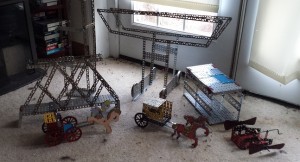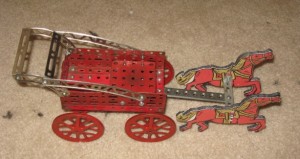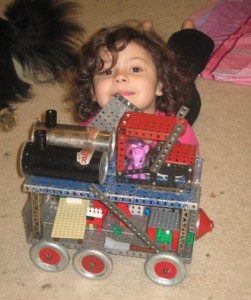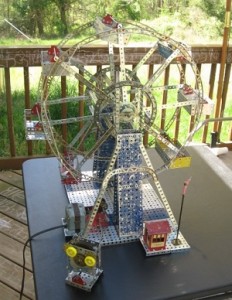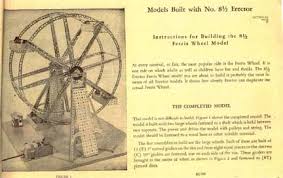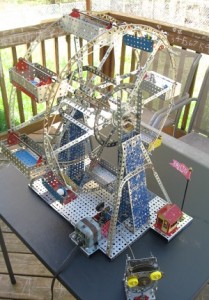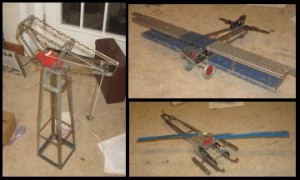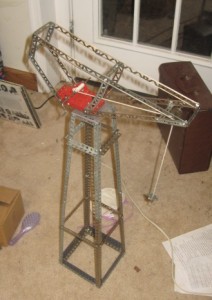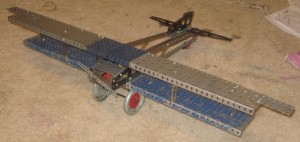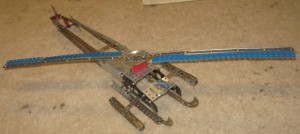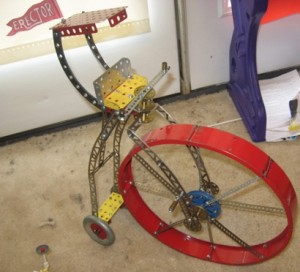![]() It’s Time to bolt!
It’s Time to bolt!
One day I came home from work, and discovered that my daughter had been building with the Erector set. A few days earlier she had asked me about using it. I suggested that she start with some of the simpler models designed for the smaller sets, like the 1 or 2 level sets from the Renaissance era. (The bulk of my Erector is Renaissance-era Class-II.) This is exactly what she did, and she even made up a few freelance models. A group portrait of these models is featured above.
From left to right to right we have a truss bridge, a four-wheel horse drawn carriage, an elevator (background), and mobile cargo crane, a two-wheel horse drawn carriage, a covered bridge, and a… whirligig flying machine thing. We never really decided exactly what to call that thing.
As you can see, she made use of the customized carousel horse parts that were created for an earlier model.
This is one she made a little later, after looking at some photographs of horse-drawn sleds. She really likes the carnival horse parts, both official and custom.
This one dates from a bit earlier, and it’s supposed to be a “steampunk recreational vehicle.” It’s supposed to be powered by the two steam boilers on the roof. I did the actual building of this one, but she designed it. She made up a few drawings (blueprints!) which I used to build this. She then pimped out this ride with furnishings made from Legos, and sent some Little Ponies on a cross-country adventure.
She’s a Lego master builder, who dabbles in Erector and other building toys. Damn, I’m proud of that girl!

